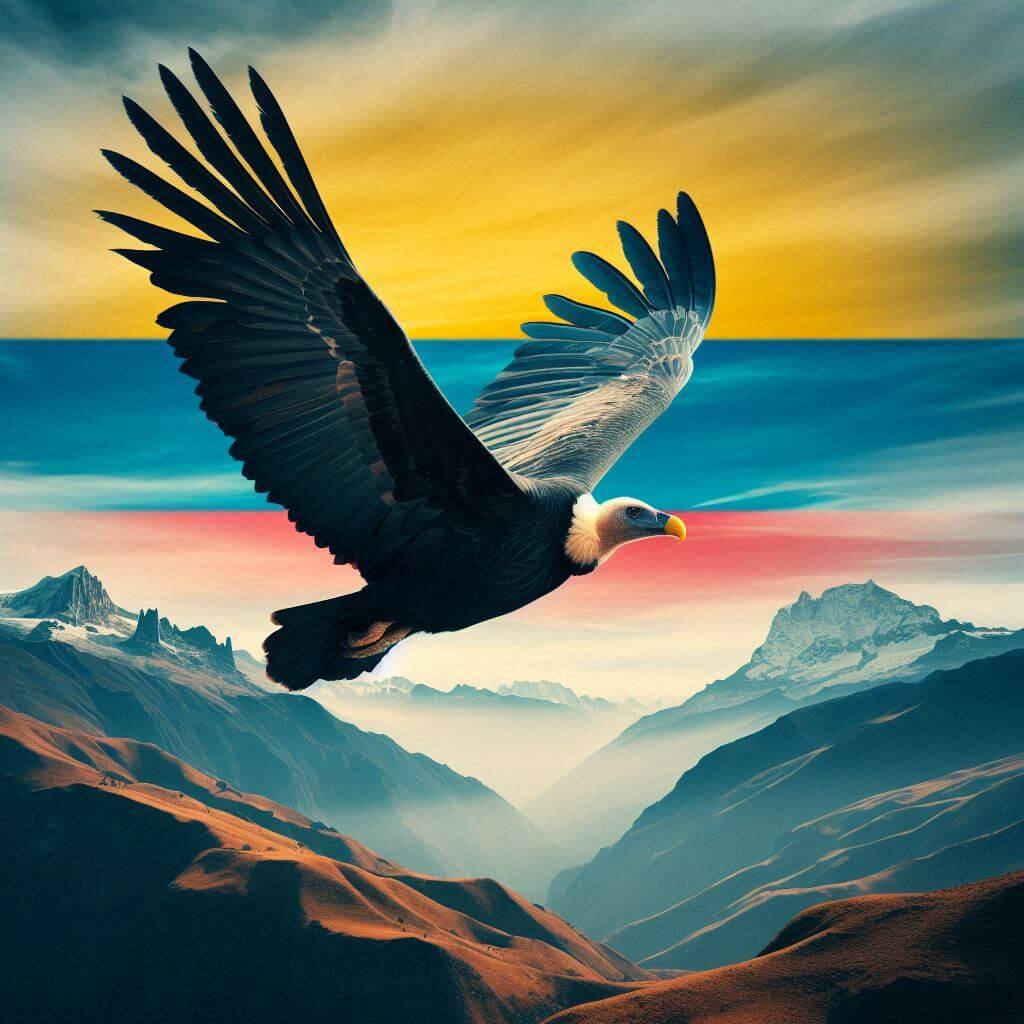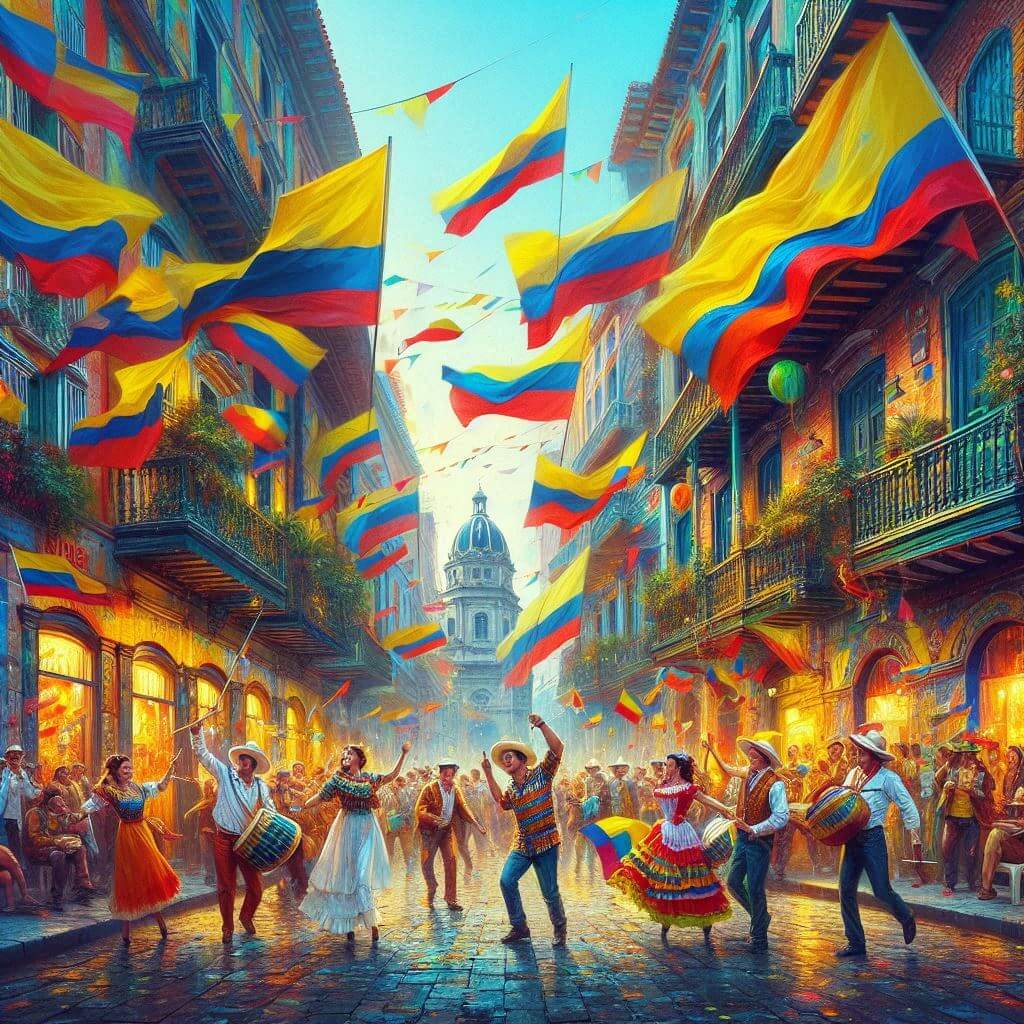The flag of Colombia consists of three horizontal bands of yellow (double-width), blue, and red. This vibrant tricolor design has represented Colombia since its days as part of Gran Colombia and continues to symbolize the nation's independence, diversity, and natural wealth.
Colombia information
| National Flag Day | August 7 |
| Sovereign state | Yes |
| Official name | Republic of Colombia |
| Capital | Bogotá |
| Population | 51,334,791 |
| Area | 1,141,748 km² |
| Currency | Colombian peso (COP) |
| Language | Spanish |
| Continent | South America |
| Region | South America |
| Subregion | Andean states |
| Borders | Brazil, Ecuador, Panama, Peru, Venezuela |
| Timezone | Colombia Time (COT) UTC-5 |
| Calling code | +57 |
| Top-level domain | .co |
History of the Colombian Flag
 The current Colombian flag was officially adopted on November 26, 1861. However, its origins date back to 1806 when it was first conceived by Francisco de Miranda, a Venezuelan revolutionary and forerunner of Latin American independence. The flag was initially used to represent Gran Colombia, a federation that included present-day Colombia, Ecuador, Panama, and Venezuela.
The current Colombian flag was officially adopted on November 26, 1861. However, its origins date back to 1806 when it was first conceived by Francisco de Miranda, a Venezuelan revolutionary and forerunner of Latin American independence. The flag was initially used to represent Gran Colombia, a federation that included present-day Colombia, Ecuador, Panama, and Venezuela.
After the dissolution of Gran Colombia in 1831, Colombia (then known as New Granada) retained the tricolor design, which was officially ratified in 1834. The flag has remained essentially unchanged since then, with only minor modifications to its proportions over the years.
Symbolism and Design of the Colombian Flag
The flag of Colombia is renowned for its vibrant colors and profound symbolism, representing the country's history, geography, and aspirations:
- Yellow Band: Occupying half of the flag's area, it symbolizes Colombia's wealth, sovereignty, harmony, justice, and agriculture. It also represents the country's gold resources and the sun.
- Blue Band: Represents the sky above Colombia and the waters of its oceans (the Caribbean Sea and the Pacific Ocean). It also symbolizes loyalty, vigilance, and the pursuit of truth and justice.
- Red Band: Symbolizes the bloodshed and sacrifices made by Colombians in their quest for independence and freedom. It also represents the determination, perseverance, and love of the Colombian people.
The proportions of the flag are precisely defined: the yellow band occupies the upper half of the flag, while the blue and red bands each occupy one-quarter.
Usage and Significance of the Colombian Flag
 The Colombian flag holds deep significance as a national symbol, embodying the unity, diversity, and resilience of the Colombian people. It is prominently displayed during:
The Colombian flag holds deep significance as a national symbol, embodying the unity, diversity, and resilience of the Colombian people. It is prominently displayed during:
- Independence Day celebrations (July 20)
- Battle of Boyacá Day (August 7)
- Official state ceremonies and visits
- International events and sports competitions
The flag is also an important symbol in education, with many schools conducting flag-raising ceremonies to instill national pride and values in students. Its use is regulated by law to ensure proper display and respect.
Interesting Facts About the Colombian Flag
- The Colombian flag shares its colors with Ecuador and Venezuela, reflecting their shared history as part of Gran Colombia.
- The flag's design was inspired by the tricolor used by French revolutionaries, symbolizing liberty, equality, and fraternity.
- Colombia celebrates National Flag Day on August 7, coinciding with the anniversary of the Battle of Boyacá, a crucial victory in the country's independence struggle.
- The world's largest Colombian flag is displayed annually in Bogotá on Independence Day, measuring 42 meters by 28 meters (138 ft by 92 ft).
- In Colombian heraldry, the condor (the national bird) is often depicted holding the flag in its talons, symbolizing the nation's strength and freedom.